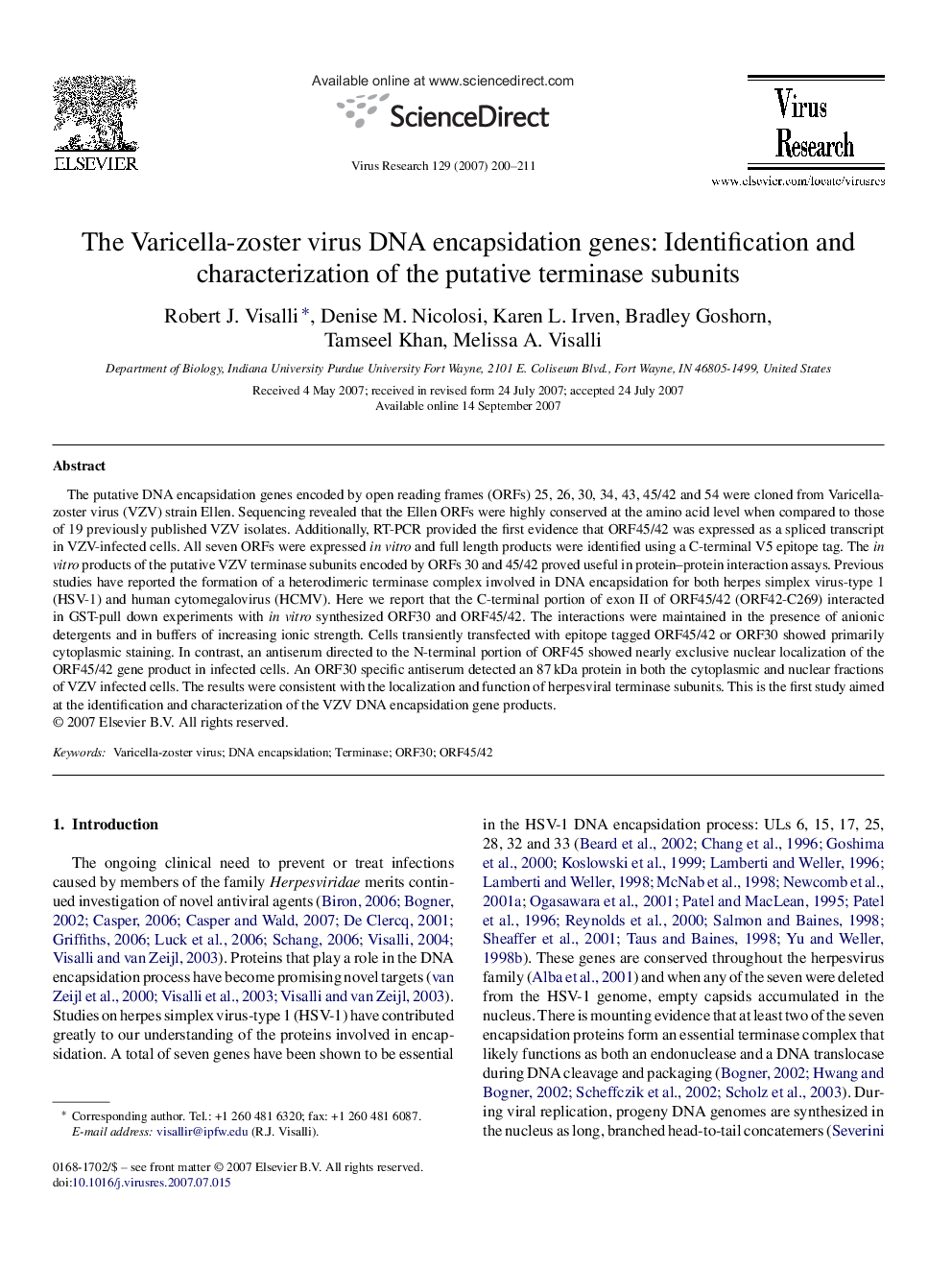| Article ID | Journal | Published Year | Pages | File Type |
|---|---|---|---|---|
| 3430759 | Virus Research | 2007 | 12 Pages |
The putative DNA encapsidation genes encoded by open reading frames (ORFs) 25, 26, 30, 34, 43, 45/42 and 54 were cloned from Varicella-zoster virus (VZV) strain Ellen. Sequencing revealed that the Ellen ORFs were highly conserved at the amino acid level when compared to those of 19 previously published VZV isolates. Additionally, RT-PCR provided the first evidence that ORF45/42 was expressed as a spliced transcript in VZV-infected cells. All seven ORFs were expressed in vitro and full length products were identified using a C-terminal V5 epitope tag. The in vitro products of the putative VZV terminase subunits encoded by ORFs 30 and 45/42 proved useful in protein–protein interaction assays. Previous studies have reported the formation of a heterodimeric terminase complex involved in DNA encapsidation for both herpes simplex virus-type 1 (HSV-1) and human cytomegalovirus (HCMV). Here we report that the C-terminal portion of exon II of ORF45/42 (ORF42-C269) interacted in GST-pull down experiments with in vitro synthesized ORF30 and ORF45/42. The interactions were maintained in the presence of anionic detergents and in buffers of increasing ionic strength. Cells transiently transfected with epitope tagged ORF45/42 or ORF30 showed primarily cytoplasmic staining. In contrast, an antiserum directed to the N-terminal portion of ORF45 showed nearly exclusive nuclear localization of the ORF45/42 gene product in infected cells. An ORF30 specific antiserum detected an 87 kDa protein in both the cytoplasmic and nuclear fractions of VZV infected cells. The results were consistent with the localization and function of herpesviral terminase subunits. This is the first study aimed at the identification and characterization of the VZV DNA encapsidation gene products.
